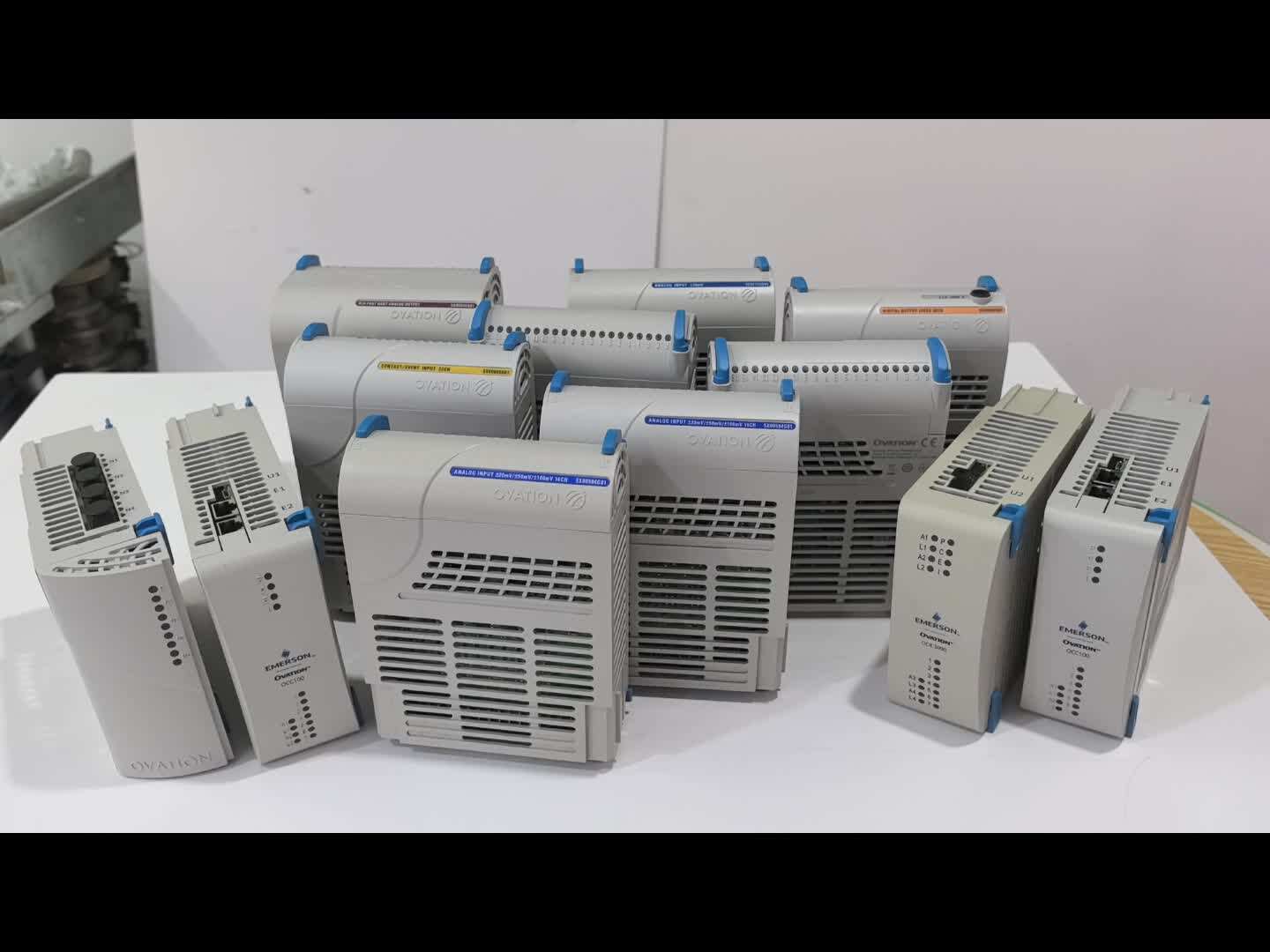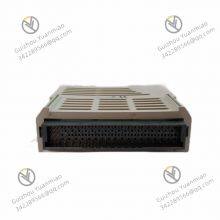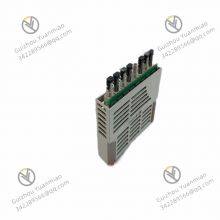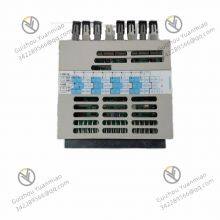Emerson 5X00059G01 Analog Output (AO) module
1. Overview of Core Functions The main function of this module is to convert digital signals output by control systems (such as DCS, PLC) into standard analog signals (e.g., 4-20mA, 0-10V) to drive field devices like control valves, frequency converters, and actuators. It supports the HART communication protocol, enabling the superimposed transmission of digital and analog signals for remote configuration and diagnosis. 2. Detailed Workflow (1) Digital Signal Reception The module receives digital control signals from the main controller via the backplane bus (e.g., the redundant communication bus of Emerson Ovation system). These signals are typically 16-bit or higher-resolution digital quantities (e.g., 0-65535), representing target output values (e.g., a 50% valve opening command). (2) Digital-to-Analog Conversion (DAC) It integrates a high-precision digital-to-analog converter (DAC) to convert digital signals into analog voltage signals (e.g., 0-5V intermediate signals). - Resolution: Usually 16 bits or higher, ensuring output signal accuracy (e.g., 16 bits correspond to 65,536 discrete points, achieving a theoretical accuracy of 0.0015%). - Conversion formula: `Analog output value = Digital input value × (Full-scale value / Digital range)` For example, a digital input of 32,768 (50%) corresponds to an actual output of 12mA for a 4-20mA output. (3) Signal Conditioning and Amplification Amplifies the low-power voltage signal from the DAC into industrial standard signals (e.g., 4-20mA current loop or 0-10V voltage signal). - Current loop driving: Ensures output current stability despite load impedance changes via an internal constant current source circuit (typical load range: 0-600Ω). - Voltage output: Provides low-impedance output through voltage followers or amplifiers to ensure anti-interference capability. (4) HART Signal Superimposition (Optional) If HART function is enabled, the module superimposes digital communication signals onto the 4-20mA current signal via FSK (Frequency Shift Keying) technology: - 1200Hz frequency: Represents logic "1"; - 2200Hz frequency: Represents logic "0". Digital signals are used to transmit device parameters (e.g., range, damping time) or receive commands from the host computer (e.g., calibration, configuration changes). (5) Isolation and Protection - Optoelectronic isolation: Input and output signals are isolated by optocouplers with an isolation voltage typically up to 1500VDC to prevent interference and fault propagation. - Overvoltage/overcurrent protection: Built-in fuses or current-limiting circuits protect the module and field devices in case of output short circuits. (6) Status Feedback and Diagnosis The module continuously monitors its operating status (e.g., power voltage, DAC output value) and feeds back to the main controller via the backplane bus. If anomalies are detected (e.g., output out of range, HART communication interruption), it triggers an alarm and records fault codes. 

Send Inquiry to This Supplier
You May Also Like
-
Emerson 5X00105G07 Controller ModuleNegotiableMOQ: 1 Piece
-
Emerson 5X00105G14 High-performance CPU ModuleNegotiableMOQ: 1 Piece
-
Emerson 5X00106G01 Programmable Logic Controller ModuleNegotiableMOQ: 1 Piece
-
Emerson 5X00121G01 Thermal Resistance Input CardNegotiableMOQ: 1 Piece
-
Emerson 5X00167G01 8-channel Analog Output ModuleNegotiableMOQ: 1 Piece
-
Emerson 5X00208G01 Controller ModuleNegotiableMOQ: 1 Piece
-
Emerson 5X00225G01 Counter ModuleNegotiableMOQ: 1 Piece
-
5X00226G03 Emerson I/O Interface ModuleNegotiableMOQ: 1 Piece
-
Emerson VE3005 DeltaV Series Controller ModuleNegotiableMOQ: 1 Piece
-
Emerson VE3006 DeltaV Series Distributed Control ModuleNegotiableMOQ: 1 Piece













































